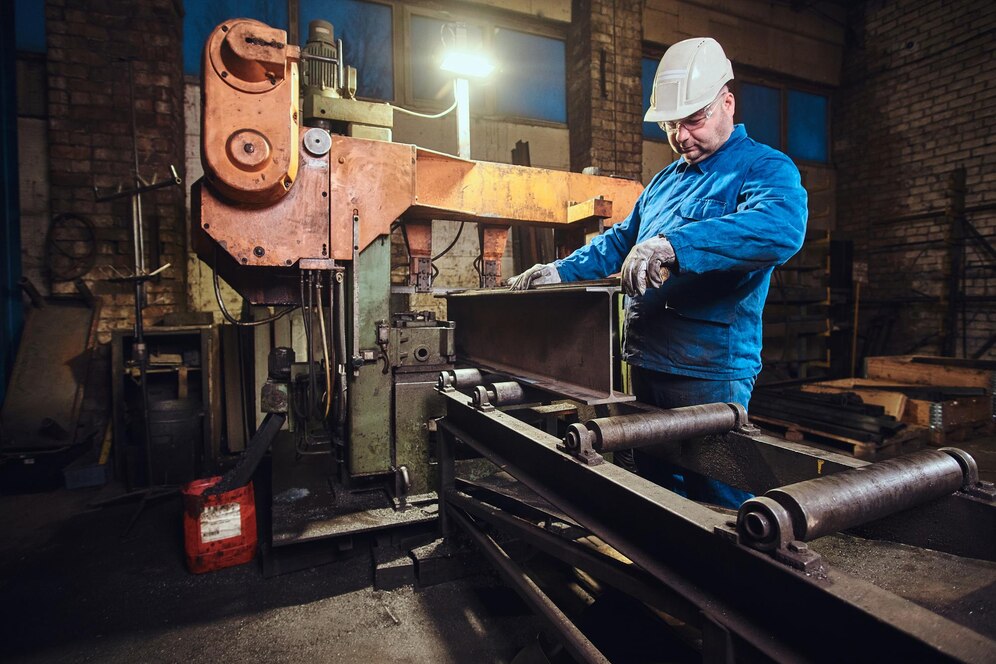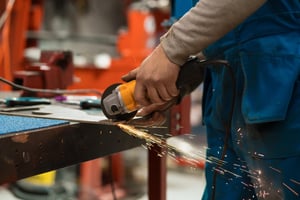Introduction: Sheet metal parts are components manufactured from thin, flat sheets of metal. These...
5 Tips for Designing Sheet Metal Parts for Fabrication
Introduction:
Designing sheet metal parts for fabrication requires careful consideration of various factors to ensure optimal manufacturability, functionality, and cost-effectiveness. Whether you're a novice or an experienced engineer, observing to best practices in sheet metal design can significantly impact the success of your project.

In this article, we'll discuss five essential tips for designing Sheet Metal Fabrication Parts, covering aspects such as material selection, geometric considerations, tolerance management, and more.
Understand Manufacturing Processes: Before delving into the design phase, it's crucial to have a solid understanding of the manufacturing processes involved in sheet metal fabrication. Familiarize yourself with techniques such as cutting, bending, forming, welding, and finishing, as each process has its own limitations and considerations. By understanding the capabilities and constraints of these processes, you can design sheet metal parts that are optimized for efficient and cost-effective fabrication.
For example, consider the minimum bend radius for your chosen sheet metal material, as bending beyond this limit can result in cracking or deformation. Similarly, avoid sharp internal corners that may be difficult to form accurately during the bending process. By designing with manufacturing processes in mind, you can minimize production challenges and optimize the overall fabrication workflow.
Optimize Material Selection: Selecting the right material is critical for the performance, durability, and cost-effectiveness of sheet metal parts. Consider factors such as material strength, corrosion resistance, formability, and cost when choosing the appropriate material for your application. Commonly used sheet metal materials include steel, aluminum, stainless steel, and copper, each offering unique properties and advantages.
For example, if weight reduction is a priority, consider using aluminum or other lightweight alloys. Conversely, if strength and durability are paramount, opt for high-strength steel or stainless steel. Additionally, consider the thickness of the sheet metal material, as thinner materials are generally more cost-effective but may require additional support or reinforcement in certain applications. By carefully evaluating material options based on your specific requirements, you can ensure optimal performance and cost-effectiveness in your sheet metal design.
Design for Manufacturability: Designing sheet metal parts for manufacturability involves optimizing the design to minimize fabrication complexity, reduce production costs, and streamline the assembly process. Consider factors such as symmetry, symmetry, and ease of assembly when designing sheet metal components. Avoid overly complex geometries or features that may be difficult or costly to fabricate.
For example, incorporate standard hole sizes and spacing to facilitate punch and die operations during the drilling process. Similarly, design parts with uniform thicknesses to simplify bending and forming operations. Additionally, consider the orientation of features relative to the direction of material grain flow, as this can affect the strength and formability of the final part.
By designing for manufacturability, you can minimize production time, reduce scrap and rework, and ultimately lower the overall cost of fabrication. Collaborating with experienced sheet metal fabricators during the design phase can provide valuable insights and recommendations for optimizing your design for efficient production.
Manage Tolerances Effectively: Tolerance management is crucial in sheet metal design to ensure that parts fit and function correctly within the assembly. Define clear tolerances for critical dimensions, hole sizes, and feature locations to accommodate variations in manufacturing processes and assembly requirements. Consider the cumulative effects of tolerances throughout the assembly to prevent dimensional stack-up issues that could affect the overall functionality of the product.
For example, specify tighter tolerances for mating features or functional surfaces that require precise alignment or engagement. Conversely, allow for looser tolerances on non-critical dimensions to minimize production costs without sacrificing performance. Additionally, communicate tolerance requirements effectively with your sheet metal fabricator to ensure that they are capable of meeting your design specifications.
Utilizing geometric dimensioning and tolerancing (GD&T) principles can help clarify tolerance requirements and improve communication between design engineers and fabricators. By managing tolerances effectively, you can ensure that your sheet metal parts are manufactured to the required specifications and meet the performance expectations of the final product.
Consider Surface Treatment and Finishing: Surface treatment and finishing play a crucial role in enhancing the aesthetics, corrosion resistance, and durability of sheet metal parts. Consider the environmental conditions, functional requirements, and desired appearance of the final product when selecting surface treatment options. Common surface treatments for sheet metal parts include painting, powder coating, anodizing, plating, and chemical conversion coatings.
For example, if corrosion resistance is a concern, consider applying a protective coating such as zinc plating or chromate conversion coating. If aesthetics are important, opt for a decorative finish such as powder coating or painting in a desired color. Additionally, consider the surface roughness and texture requirements of your design to ensure compatibility with the chosen finishing process.
Collaborate closely with your sheet metal fabricator to select the most appropriate surface treatment and finishing options for your specific application. Consider factors such as cost, lead time, and environmental impact when making decisions about surface treatment. By incorporating surface treatment considerations into your design process, you can ensure that your sheet metal parts meet both functional and aesthetic requirements.
Conclusion:
Designing sheet metal parts for fabrication requires careful consideration of various factors, including manufacturing processes, material selection, manufacturability, tolerance management, and surface treatment. By adhering to best practices and incorporating these tips into your design process, you can optimize the manufacturability, functionality, and cost-effectiveness of your sheet metal parts. Collaboration with experienced sheet metal fabricators and leveraging advanced design tools can further enhance the quality and efficiency of your sheet metal design process. With proper planning and attention to detail, you can create sheet metal parts that meet the highest standards of quality, performance, and reliability.
This comprehensive guide provides valuable insights and recommendations for engineers and designers involved in sheet metal design, helping them navigate the complexities of the fabrication process and achieve optimal results in their projects. By following these tips and incorporating them into your design workflow, you can enhance the success and effectiveness of your sheet metal fabrication projects, ultimately driving innovation and excellence in the manufacturing industry.


